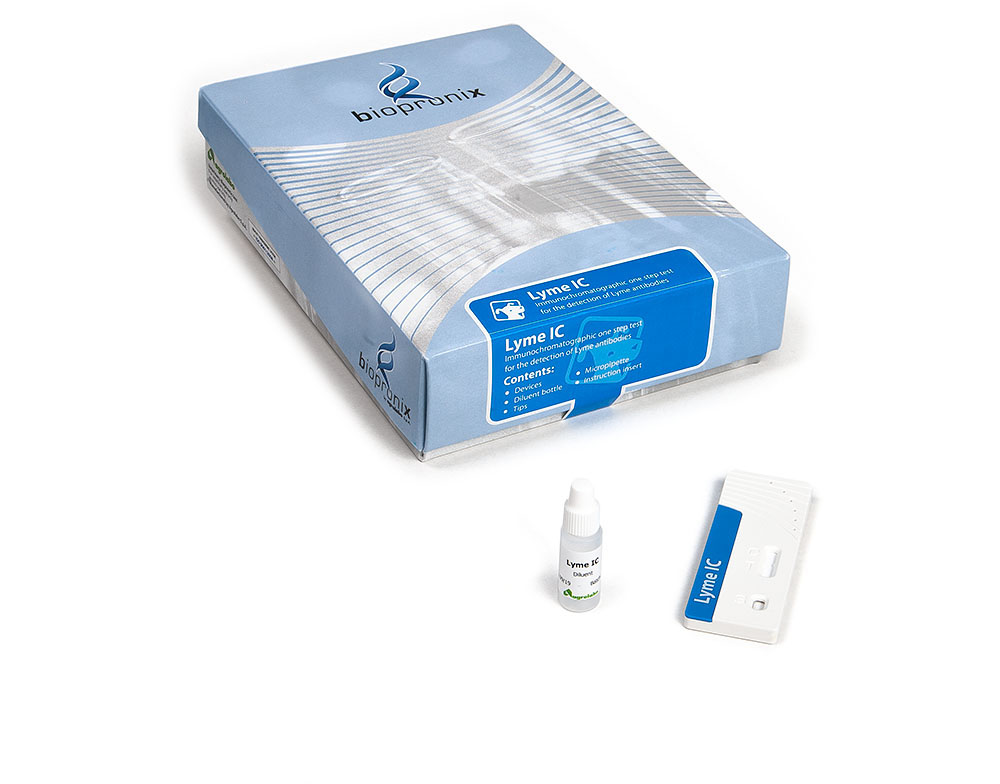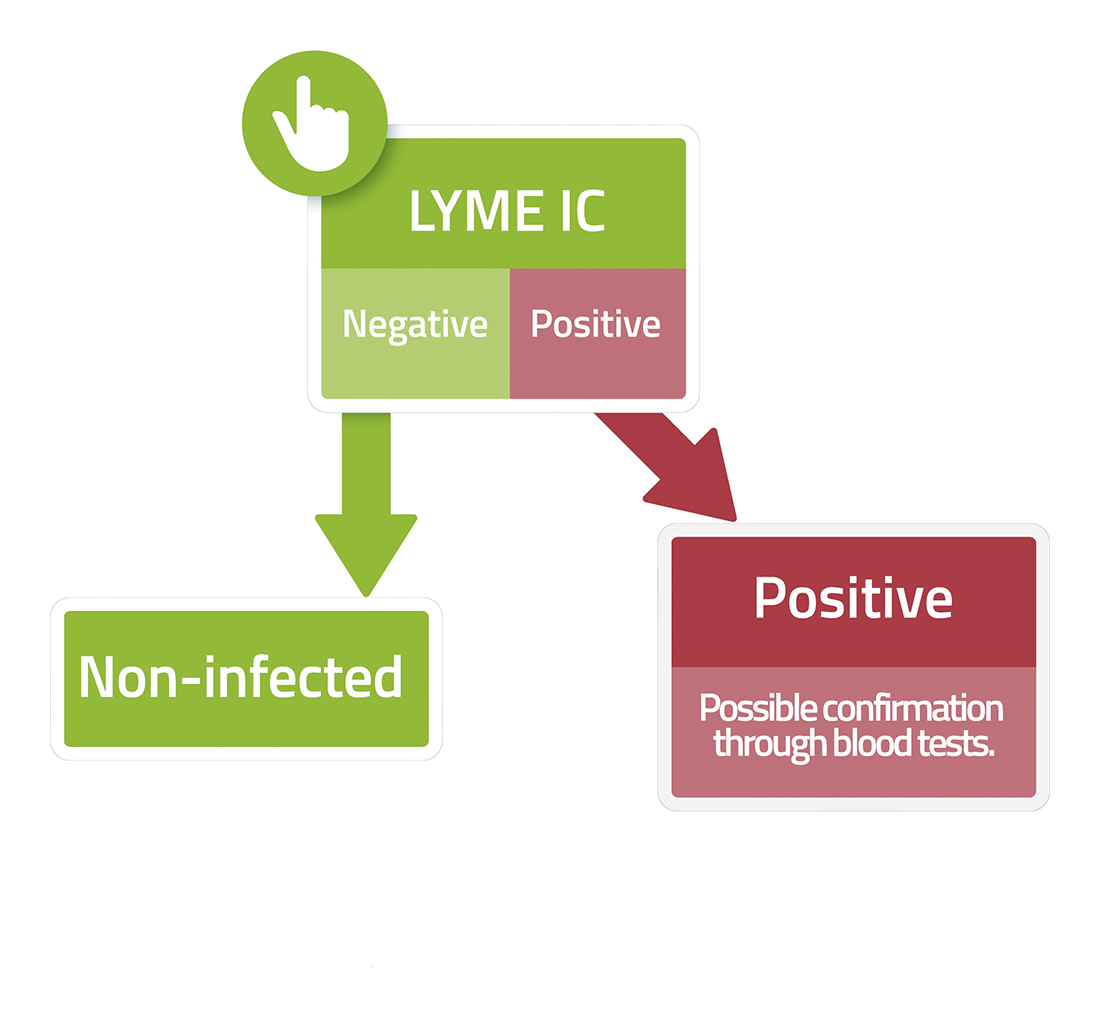Lyme IC
Rapid test for the detection of antibodies to Borrelia burgdorferi
Lyme IC is an immunochromatographic test for the detection of antibodies to Borrelia burgdorferi in canine whole blood, serum or plasma.
Lyme disease (also known as Borreliosis) is an infectious disease caused by a spirochete called Borrelia burgdoferi and transmitted by various ticks of the Ixodes group that act as vectors.
Borreliosis cannot survive as free-living microorganisms in the environment. They are host-associated and are transmitted between vertebrate reservoir hosts and hematophagous arthropods (for hematophagous are intended those animals that feed on blood or destroy the red blood cells of other animals).
The transmission of the spirochetes requires at least 50 hours of tick attachment, time needed for microorganisms to multiply and cross the gut epithelium, enter into the haemolymph, reach the salivary glands and infect the host through tick saliva. After entering the body, a chronic infection is generated. Clinical disease in dogs occurs 2 to 6 months after ticks exposure. Age and immune status of the animal affect both the disease severity and possibility to develop the symptoms. The onset of the disease is usually correlated with an increase in serum antibody titer.
The disease is widespread in North Amerca, Europe and Asia. In Europe it is quite common in Scandinavia and central Europe, in Italy it is found more frequently in the Karst, in Trentino-Alto and in Liguria; it is however present, although less commonly, also in other Italian regions.
- fever 39.5-40.5 °C,
- intermittent lameness affecting the different limbs,
- joint swelling,
- lymphoadenomegaly,
- anorexia and general discomfort,
- polyarthritis usually in the limb closest to the tick attack site,
- nephropathies,
- meningitis,
- initial transient skin rash that develops where the tick has stung the animal.

